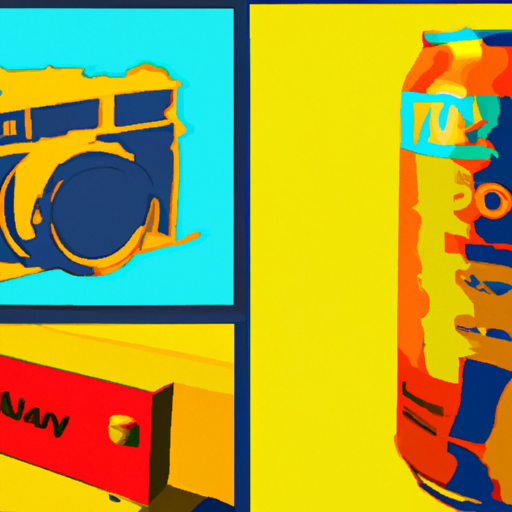
-
Table of Contents
Designing for AR and VR Experiences

Augmented Reality (AR) and Virtual Reality (VR) have become increasingly popular technologies in recent years, revolutionizing the way we interact with digital content. From gaming and entertainment to education and healthcare, AR and VR have found applications in various industries. As these technologies continue to evolve, it is crucial for designers to understand the unique challenges and considerations involved in creating immersive and engaging AR and VR experiences. In this article, we will explore the key principles and best practices for designing AR and VR experiences, backed by research, examples, and case studies.
The Importance of User-Centered Design
When designing for AR and VR experiences, it is essential to prioritize user-centered design principles. These technologies aim to create immersive and interactive experiences, and the success of these experiences heavily relies on how well they meet the needs and expectations of the users. Here are some key considerations:
- Understanding the User: Conduct thorough user research to gain insights into the target audience’s preferences, behaviors, and expectations. This research will help inform design decisions and ensure that the experience aligns with user needs.
- Usability: Focus on creating intuitive and easy-to-use interfaces. AR and VR experiences should not require extensive training or complex interactions to be enjoyable. Keep the user interface simple and provide clear instructions or cues to guide users through the experience.
- Accessibility: Consider accessibility requirements when designing AR and VR experiences. Ensure that the content is accessible to users with disabilities, such as providing alternative text for visual elements or incorporating audio descriptions.
Designing for Immersion
One of the primary goals of AR and VR experiences is to create a sense of immersion, transporting users to virtual environments or enhancing their perception of the real world. To achieve this, designers must focus on the following aspects:
- Visual Realism: Pay attention to the visual fidelity of the virtual environment or augmented content. High-quality graphics, realistic textures, and accurate lighting can significantly enhance the sense of immersion.
- Audio Design: Sound plays a crucial role in creating a realistic and immersive experience. Spatial audio, where sounds are positioned in 3D space, can enhance the sense of presence and make the experience more engaging.
- Interaction: Design interactive elements that allow users to engage with the virtual environment or augmented content. Incorporate natural gestures or intuitive controls to make the experience more immersive and intuitive.
Optimizing Performance
AR and VR experiences require significant computational power to deliver smooth and responsive interactions. Designers must optimize performance to ensure a seamless experience for users. Here are some strategies to consider:
- Optimized Assets: Use optimized 3D models, textures, and animations to reduce the computational load. Avoid unnecessary details or complex geometry that may impact performance.
- Efficient Rendering: Implement efficient rendering techniques, such as occlusion culling and level-of-detail rendering, to minimize the number of objects rendered at any given time. This optimization can significantly improve performance.
- Frame Rate: Aim for a consistent and high frame rate to ensure smooth and comfortable experiences. Lower frame rates can lead to motion sickness or discomfort for users.
Case Studies
Let’s explore a couple of case studies that highlight successful AR and VR experiences:
Case Study 1: Pokémon GO
Pokémon GO, a popular AR game developed by Niantic, took the world by storm in 2016. The game allowed players to capture virtual Pokémon creatures in the real world using their smartphones. Pokémon GO’s success can be attributed to its seamless integration of AR technology with gameplay, creating a compelling and immersive experience for players.
The game leveraged the GPS capabilities of smartphones to overlay virtual Pokémon on real-world locations. This integration of virtual and physical elements made the gameplay feel more realistic and engaging. Pokémon GO’s user-centered design approach, combined with its innovative use of AR technology, resulted in a game that captivated millions of players worldwide.
Case Study 2: Oculus Rift
Oculus Rift, a VR headset developed by Oculus VR, revolutionized the gaming industry by providing an immersive virtual reality experience. The headset, combined with motion tracking sensors, allowed users to explore virtual worlds and interact with virtual objects.
Oculus Rift’s success can be attributed to its focus on visual realism and interaction. The headset provided a wide field of view and high-resolution displays, creating a visually stunning and immersive experience. Additionally, the inclusion of hand controllers allowed users to interact with virtual objects, further enhancing the sense of presence and immersion.
Key Takeaways
Designing for AR and VR experiences requires a user-centered approach, focusing on immersion and performance optimization. Here are the key takeaways:
- Conduct thorough user research to understand user needs and preferences.
- Keep the user interface simple and intuitive.
- Pay attention to visual realism and audio design to enhance immersion.
- Optimize assets and rendering techniques for better performance.
- Learn from successful case studies like Pokémon GO and Oculus Rift.
By following these principles and best practices, designers can create compelling and immersive AR and VR experiences that captivate users and push the boundaries of digital interaction.
